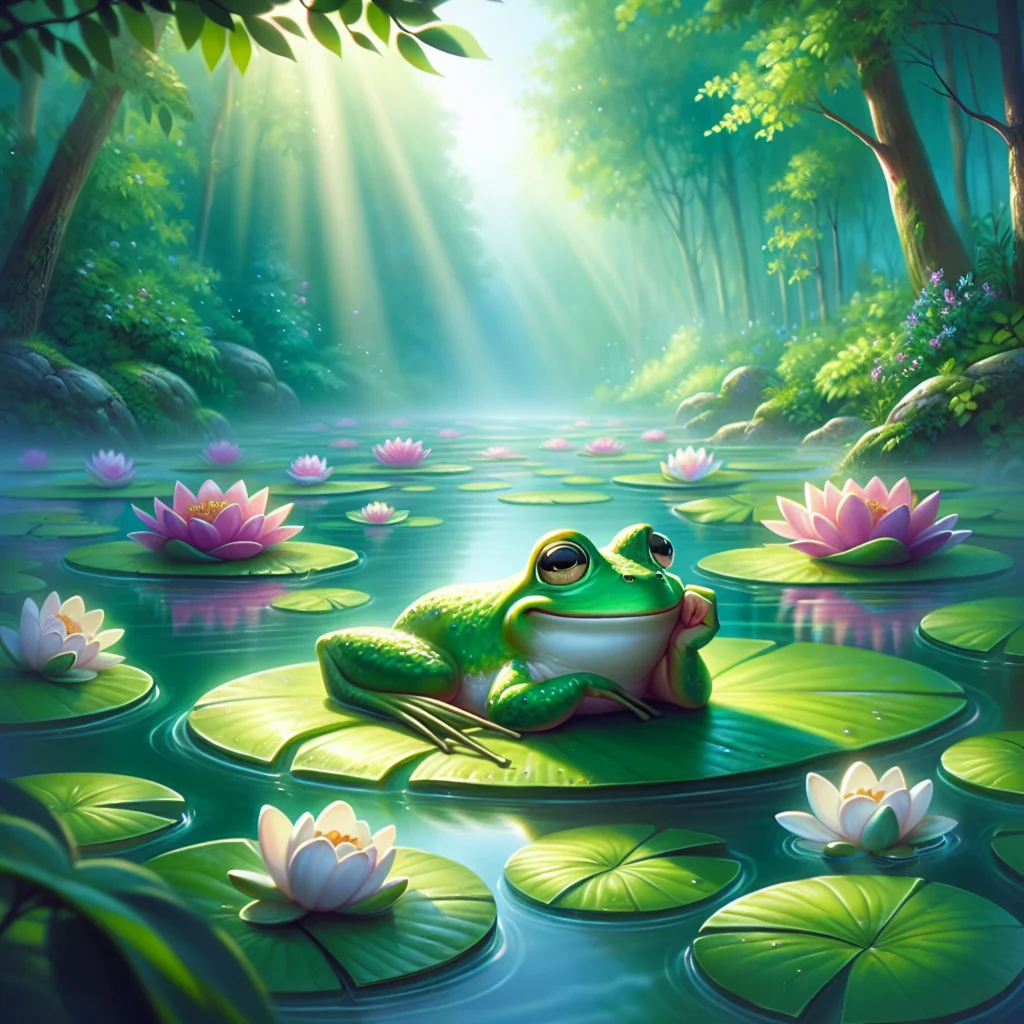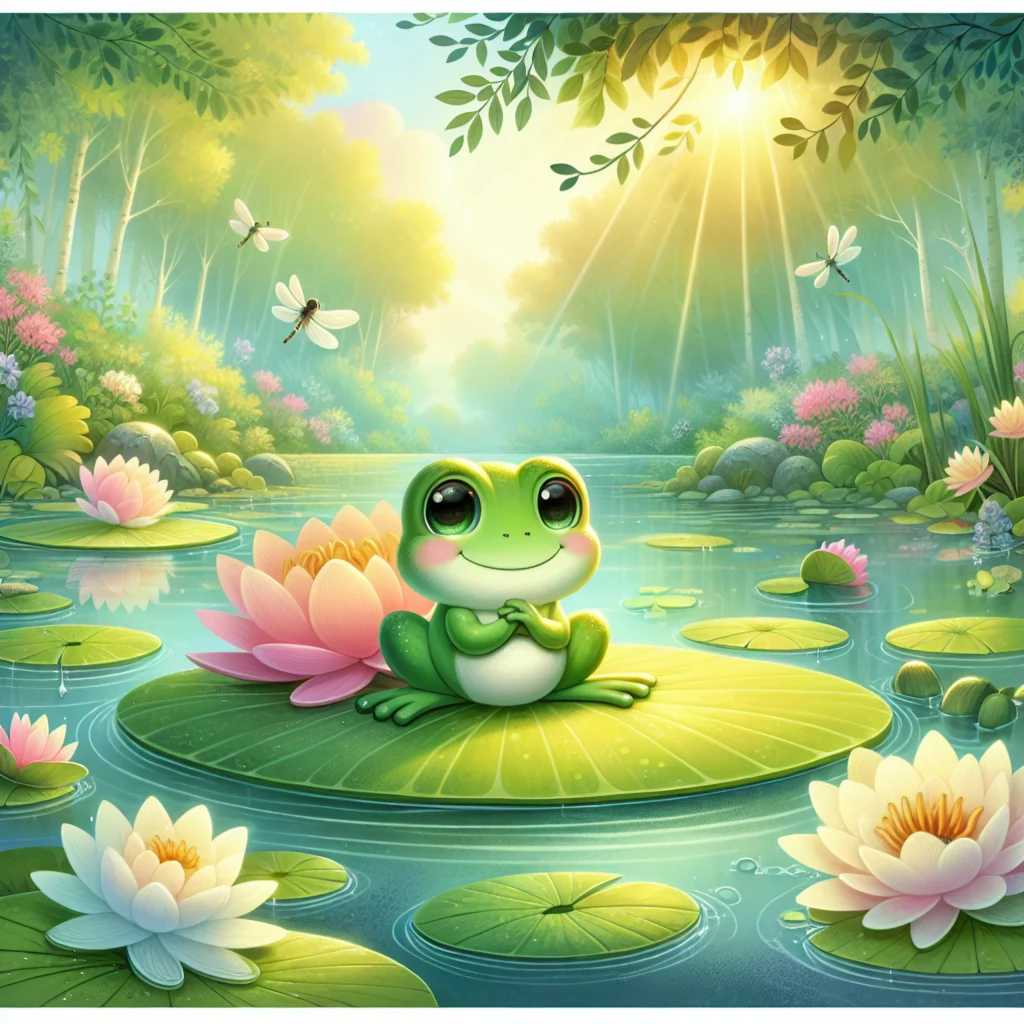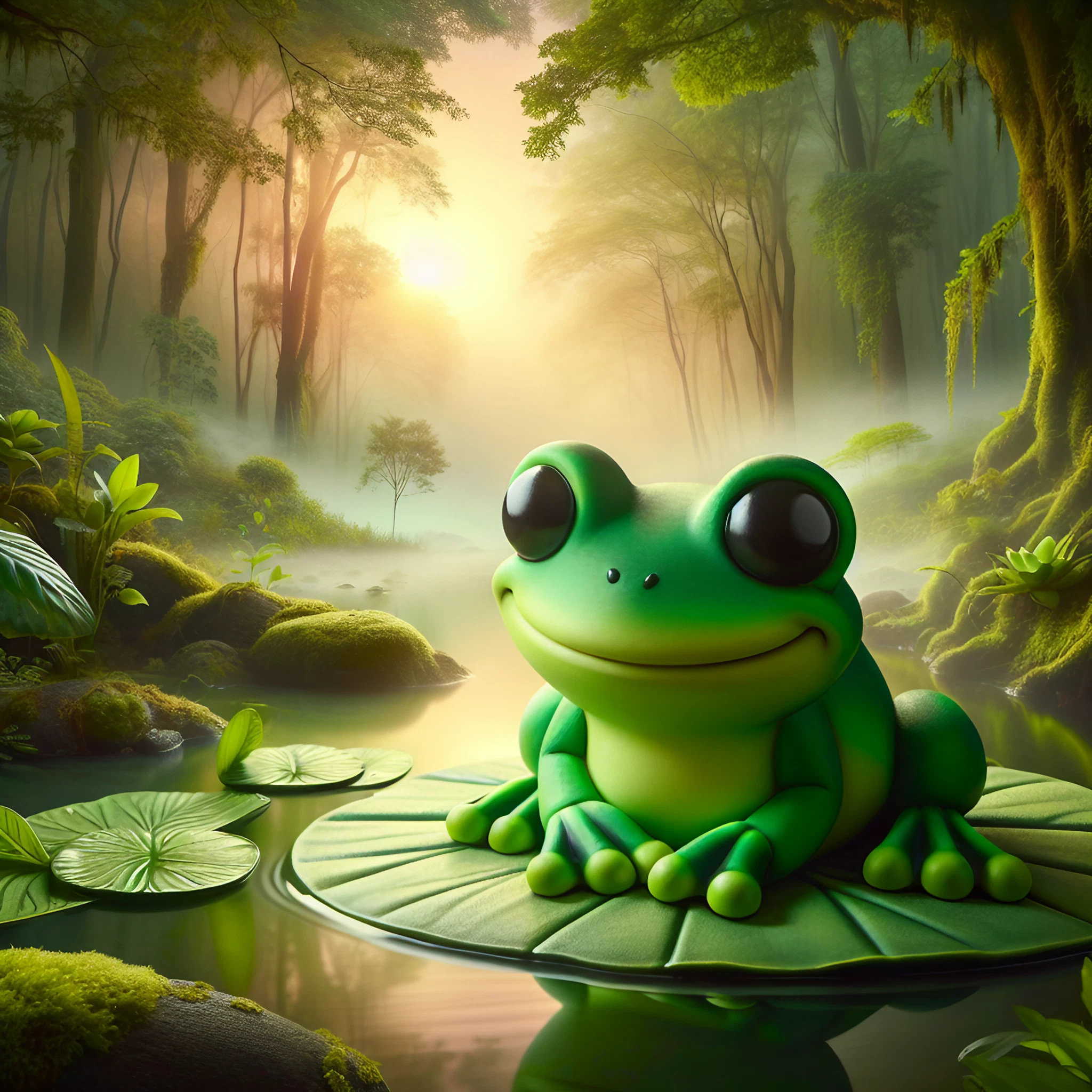Frogs have long been beloved for their quirky appearances and charming behaviors, but there’s one amphibian that’s capturing the hearts of many—the cute:7ziqkivryto= frog. This particular species is a standout for its unique characteristics and endearing qualities that make it a fascination for animal lovers, nature enthusiasts, and families alike. In this blog post, we’ll explore everything you need to know about the cute:7ziqkivryto= frog, from its habitat and diet to its role in the ecosystem and tips for observing them in the wild.
What Makes the Cute:7ziqkivryto= Frog Special?
The cute:7ziqkivryto= frog is not just any regular amphibian—it stands out due to its distinct features and behaviors. Its vibrant colors and playful antics make it a joy to watch, whether you’re a child or an adult. The cute:7ziqkivryto= frog has a unique way of interacting with its environment, often showing behaviors that are both intriguing and delightful. Unlike many other frog species, this frog is known for its social nature, often seen in groups.
This frog’s coloration is another aspect that sets it apart. The bright hues not only serve as a warning to predators but also add to its visual appeal. The cute:7ziqkivryto= frog’s skin patterns can range from dazzling greens to striking blues, making it a real treat for the eyes. Furthermore, its small size adds to its cuteness, making it a favorite among children and animal photographers.
Another remarkable feature of the cute:7ziqkivryto= frog is its call. The melodious croak of this frog is often described as music to the ears. These calls are more than just noise; they are a vital part of the frog’s communication and mating rituals. For animal lovers, hearing the call of the cute:7ziqkivryto= frog in its natural habitat is an experience like no other.
Habitat and Natural Environment
The cute:7ziqkivryto= frog thrives in a variety of environments, from tropical rainforests to marshy wetlands. Understanding their habitat is crucial for those interested in observing them in the wild. These frogs are most commonly found near bodies of water, such as ponds, streams, and wetlands, where they can easily access their food sources and breeding grounds.
In the dense vegetation of tropical rainforests, the cute:7ziqkivryto= frog finds ample hiding spots to protect itself from predators. The lush greenery provides not only shelter but also an abundance of insects, which form a significant part of their diet. For nature enthusiasts, visiting these habitats offers a chance to see the cute:7ziqkivryto= frog in its most natural setting, amidst the sounds and sights of the forest.
Wetlands are another key habitat for the cute:7ziqkivryto= frog. These areas offer a rich supply of food and ideal breeding conditions. The presence of water bodies is essential for the frog’s lifecycle, from tadpole to adulthood. Observing them in wetlands can provide insights into their behaviors and interactions with other species in their ecosystem.
Diet and Feeding Habits
The diet of the cute:7ziqkivryto= frog consists mainly of insects, making them crucial players in controlling pest populations. Their feeding habits are fascinating to observe, especially given their quick reflexes and agile movements. These frogs use their sticky tongues to capture prey, a sight that is both impressive and entertaining.
Insects such as flies, mosquitoes, and beetles form the bulk of the cute:7ziqkivryto= frog’s diet. This diet not only sustains the frogs but also helps in maintaining the ecological balance by keeping insect populations in check. For kids and families, learning about the frog’s diet can be an educational experience, highlighting the importance of each species in the food chain.
Occasionally, the cute:7ziqkivryto= frog may also consume small invertebrates like spiders and worms. This varied diet ensures they get the necessary nutrients to thrive. Watching these frogs hunt and feed is a testament to their adaptability and resourcefulness, making them even more fascinating to study and admire.
Breeding and Lifecycle
The breeding habits of the cute:7ziqkivryto= frog are as intriguing as their other behaviors. These frogs usually breed in the rainy season, when water bodies are full, providing the perfect environment for their eggs and tadpoles. The process begins with the male’s call, which attracts females to suitable breeding sites.
Once the female lays her eggs, the male fertilizes them, and the lifecycle of the cute:7ziqkivryto= frog begins. The eggs hatch into tadpoles, which are entirely aquatic at this stage. Observing this transformation from tadpole to frog is a captivating experience, showcasing the remarkable changes these creatures undergo.
The metamorphosis of the cute:7ziqkivryto= frog from tadpole to adult frog includes several stages, each critical for their development. This process can be a great educational opportunity for kids, teaching them about the wonders of nature and the concept of life cycles. It’s a clear reminder of the intricate and beautiful processes that sustain life in our ecosystems.
Role in the Ecosystem
The cute:7ziqkivryto= frog plays a vital role in its ecosystem, acting as both predator and prey. By controlling insect populations, they help maintain the ecological balance, which is crucial for the health of their habitats. Their presence also supports the food chain, providing sustenance for birds, reptiles, and other larger predators.
In addition to controlling pests, the cute:7ziqkivryto= frog contributes to the nutrient cycle. Their waste products and eventual decomposition add nutrients back into the soil, supporting plant growth. This interconnectedness highlights the importance of every species, including the cute:7ziqkivryto= frog, in maintaining a healthy and functioning ecosystem.
For nature enthusiasts, understanding the role of the cute:7ziqkivryto= frog in the ecosystem can deepen their appreciation for these creatures. It underscores the significance of conservation efforts to protect not just individual species but entire habitats and the biodiversity they support.

Conservation Status and Efforts
Like many amphibian species, the cute:7ziqkivryto= frog faces threats from habitat destruction, climate change, and pollution. Conservation efforts are essential to ensure their survival and the health of their ecosystems. Organizations and researchers are working tirelessly to protect these frogs and their habitats through various initiatives.
Habitat restoration and protection are key strategies in conserving the cute:7ziqkivryto= frog. Efforts include reforestation, wetland preservation, and creating protected areas where these frogs can thrive. Educating the public about the importance of these habitats and the species that inhabit them is also crucial for garnering support for conservation measures.
For animal lovers and families, participating in conservation efforts can be a rewarding experience. Whether through volunteering, supporting conservation organizations, or simply spreading awareness, every action counts. Protecting the cute:7ziqkivryto= frog ensures that future generations can continue to enjoy and learn from these incredible creatures.
Observing the Cute:7ziqkivryto= Frog in the Wild
For those eager to see the cute:7ziqkivryto= frog in its natural habitat, planning a trip to their known habitats can be an exciting adventure. Guided tours and eco-friendly trips offer the best opportunities to observe these frogs without disturbing their environment. It’s a chance to witness their behaviors firsthand and appreciate their beauty up close.
When observing the cute:7ziqkivryto= frog, it’s important to follow ethical wildlife viewing guidelines. Maintaining a respectful distance, avoiding loud noises, and not touching or handling the frogs are essential practices to ensure their well-being. Photography enthusiasts can capture stunning images of the cute:7ziqkivryto= frog, contributing to public awareness and appreciation for these creatures.
Engaging kids and families in wildlife observation can also foster a love for nature and a sense of responsibility towards conservation. It’s an educational experience that combines fun with learning, leaving lasting impressions on young minds about the importance of protecting our natural world.
Interesting Facts About the Cute:7ziqkivryto= Frog
Did you know that the cute:7ziqkivryto= frog has a lifespan of up to 10 years? This longevity is impressive for a frog, allowing ample time for them to contribute to their ecosystem. Another fascinating fact is that their skin contains toxins that deter predators, showcasing an effective natural defense mechanism.
The cute:7ziqkivryto= frog also exhibits fascinating behaviors during mating season. Males often engage in vocal competitions to attract females, with the loudest and most persistent calls usually winning. This behavior not only ensures successful breeding but also adds to the enchanting experience of observing these frogs in the wild.
For kids and families, learning these interesting facts can make the cute:7ziqkivryto= frog even more captivating. It highlights the diversity and complexity of the natural world, encouraging curiosity and respect for all living creatures.
How to Create a Frog-Friendly Garden
If you’re inspired by the cute:7ziqkivryto= frog and want to support local frog populations, creating a frog-friendly garden is a great start. Providing suitable habitats and resources can attract frogs to your backyard, offering a safe haven for them while enhancing your garden’s biodiversity.
Begin by incorporating water features such as ponds or small fountains. These water bodies provide essential breeding grounds for frogs. Adding native plants around the water source can create a natural habitat, offering shelter and food for the cute:7ziqkivryto= frog. Avoid using pesticides, as these chemicals can harm frogs and other beneficial wildlife.
Creating hiding spots using rocks, logs, and leaf litter can also attract frogs to your garden. These elements mimic their natural habitat, providing protection from predators and extreme weather. A frog-friendly garden not only supports local wildlife but also creates a serene and educational space for kids and families to enjoy nature up close.
Educational Resources for Kids
For families looking to educate their children about the cute:7ziqkivryto= frog, there are plenty of resources available. Books, documentaries, and interactive websites offer engaging ways to learn about these fascinating creatures. Many educational materials provide detailed information on frog lifecycles, habitats, and conservation efforts.
Interactive activities such as frog-themed crafts, games, and field trips can also enhance learning. Visiting local nature centers or participating in community science projects can give kids hands-on experience in observing and protecting frogs. These activities foster a sense of wonder and responsibility towards the environment.
For educators, incorporating lessons about the cute:7ziqkivryto= frog into the curriculum can inspire students to take an active interest in wildlife conservation. Field trips, classroom discussions, and project-based learning provide opportunities to explore the importance of biodiversity and the roles various species play in our world.

Conclusion
The cute:7ziqkivryto= frog is more than just an adorable amphibian; it’s a vital part of our natural world that offers endless opportunities for learning and enjoyment. From their unique behaviors and vibrant appearances to their crucial roles in ecosystems, these frogs captivate and educate animal lovers, nature enthusiasts, and families.
By understanding and appreciating the cute:7ziqkivryto= frog, we can take meaningful steps towards their conservation and the preservation of their habitats. Whether through educational activities, creating frog-friendly gardens, or supporting conservation efforts, every action contributes to a healthier planet.
Explore more about the cute:7ziqkivryto= frog and discover how you can make a difference. Together, we can ensure that these charming creatures continue to thrive and enchant future generations.
